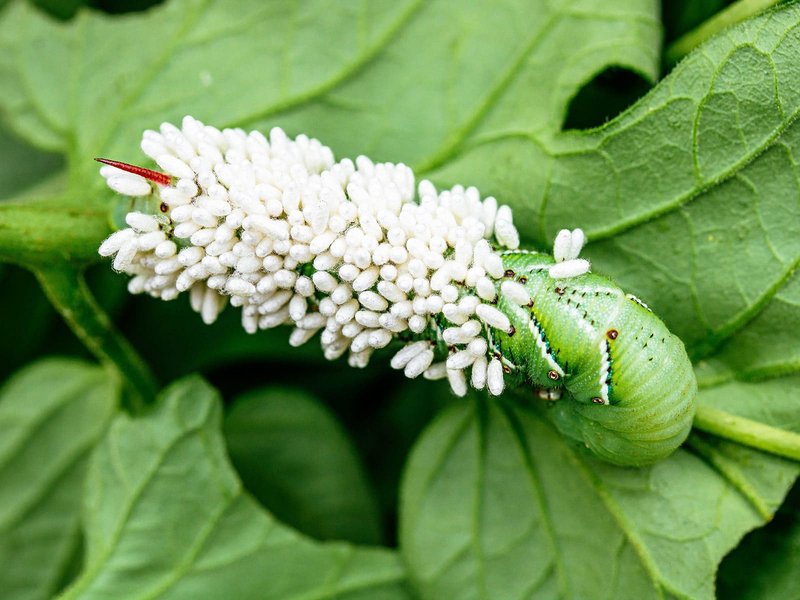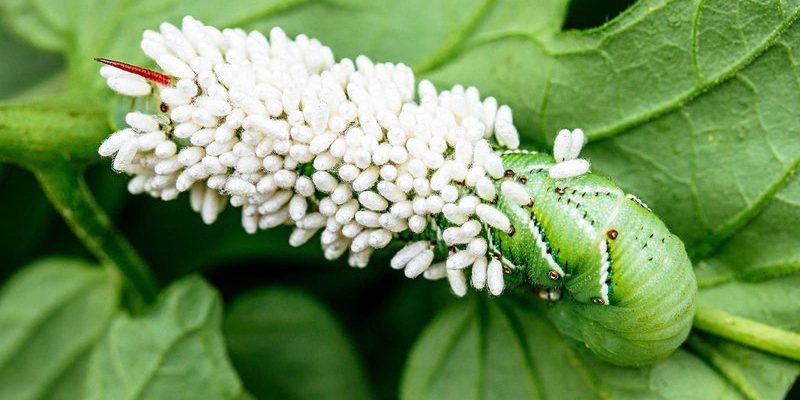
Birds who prey on hornworms are more than just a sweet sight in your garden; they’re essential for maintaining balance in your ecosystem. Think of attracting these birds as setting up a welcoming home for them, complete with cozy shelters, tasty treats, and reliable water sources. The more inviting you make your garden, the better chance you have of seeing these helpful birdies come for a visit. So, grab a cup of coffee and let’s dive into how to turn your garden into a haven for birds that feast on hornworms.
Understanding the Role of Birds in Pest Control
Birds play a crucial role in pest control by keeping populations of insects like hornworms in check. Think of them as nature’s little exterminators. Some birds, such as **bluebirds**, **wrens**, and **sparrows**, are particularly fond of munching on these pesky caterpillars. When you attract these birds, you’re not just beautifying your garden; you’re also crafting a natural defense against garden invaders.
It’s important to understand that not all birds eat hornworms, so knowing which species to attract can save you time and effort. For instance, smaller birds tend to focus on softer-bodied insects, while larger ones might not view hornworms as a delicious meal. By encouraging the right birds to visit, you can dramatically reduce the harm hornworms do to your plants.
To create a bird-friendly environment, consider your garden’s layout. Birds prefer access to both open ground—for foraging—and safe, sheltered areas for nesting. A mix of open grassy patches alongside dense shrubs might just be the perfect setting for your winged allies.
Creating the Ideal Habitat for Birds
Now that you know why birds are critical for pest control, let’s talk about how to make your garden a bird magnet. Start by planting trees and shrubs that provide natural cover and nesting sites. For example, **native plants** are excellent because they attract insects that feed the birds, enhancing the food chain.
Here are a few birds you might want to attract and the plants that will bring them in:
- Bluebirds: Plant native berry-bearing shrubs like elderberry.
- Wrens: Incorporate dense thickets or bushes with lots of cover.
- Sparrows: Provide low-growing ground cover plants for nesting.
Additionally, a birdbath is a game-changer. Birds need water for drinking and bathing, so setting up a clean and shallow birdbath will encourage them to visit. Just remember to change the water regularly to keep it fresh!
Feeding Birds to Lure Them in
While natural habitat is key, offering supplemental feeding can really boost your chances of attracting birds that feast on hornworms. A bird feeder stocked with the right seeds can be a great starting point. **Sunflower seeds** and **mealworms** are particularly popular among insect-eating birds. You might be wondering how to set this up. It’s simple!
1. Choose a feeder type that suits your yard—platform, tube, or window feeders all work well.
2. Fill it with seeds that appeal to your target birds; sunflower seeds are a crowd-pleaser.
3. Place the feeder near shrubs or trees for cover while allowing easy access.
You might also consider using homemade bird treats. Mixing suet with seeds can attract a variety of birds, providing them with additional energy to hunt hornworms.
Water Sources: Essential for Bird Attraction
Water is just as vital as food when it comes to attracting birds. Birds need it not only for drinking but also for keeping their feathers clean and healthy. A well-placed birdbath can create an inviting oasis. Here’s what you should keep in mind:
– **Fresh water** is a must. Change the water daily to prevent mosquitoes and keep it appealing.
– **Shallow depths** are best. Birds prefer water that’s easy to access without the risk of drowning.
– **Add stones or pebbles** to give birds more spots to perch and drink.
To take it up a notch, consider adding a small fountain. Moving water is often more attractive to birds because they can hear it, which signals that it’s safe and fresh.
Building Nesting Boxes for Bird Habitats
Providing nesting boxes can enhance your garden’s appeal to birds. Many species will appreciate having a secure spot to raise their young. Building or buying birdhouses might seem like a chore, but it’s easier than you might think. Here’s a quick run-down:
1. **Choose the right material:** Wood is ideal for insulation and durability. Avoid metal, as it can get too hot.
2. **Follow local guidelines:** Different birds have specific requirements for the size of opening and internal space.
3. **Position your boxes wisely:** Install them away from feeders to minimize competition and provide some shade.
By giving birds a safe place to nest, you’re not only increasing their chances of frequent visits; you’re also helping them thrive right in your garden.
Maintaining Your Bird-Friendly Garden
Once you’ve set up your bird-attracting haven, it’s crucial to keep it well-maintained. Regular maintenance ensures that your garden remains an enticing space for our feathered friends. Here’s what you can do:
– **Regularly clean bird feeders and baths** to prevent disease.
– **Monitor plant health** and remove any damaged foliage that could harbor pests.
– **Watch for hornworms –** and if you find some, don’t fret! The birds will help keep their numbers down once they arrive.
Also, try to avoid using harmful pesticides. Not only can they affect the birds directly, but they can also harm the insects that birds rely on for food. A more natural approach benefits both your garden and its visitors.
Attracting birds that prey on hornworms can transform your garden into a lively ecosystem. It’s not just about keeping pests at bay; it’s creating a space where nature can thrive. By understanding the role of birds in pest control, enhancing the habitat you provide, and offering food and water, you’ll be well on your way to inviting these helpful creatures into your yard.
So, next time you’re in the garden, take a moment to appreciate the balance of life. The birds you attract won’t just be your garden’s allies; they’ll also make your space a bit more vibrant and full of life. Happy gardening!

